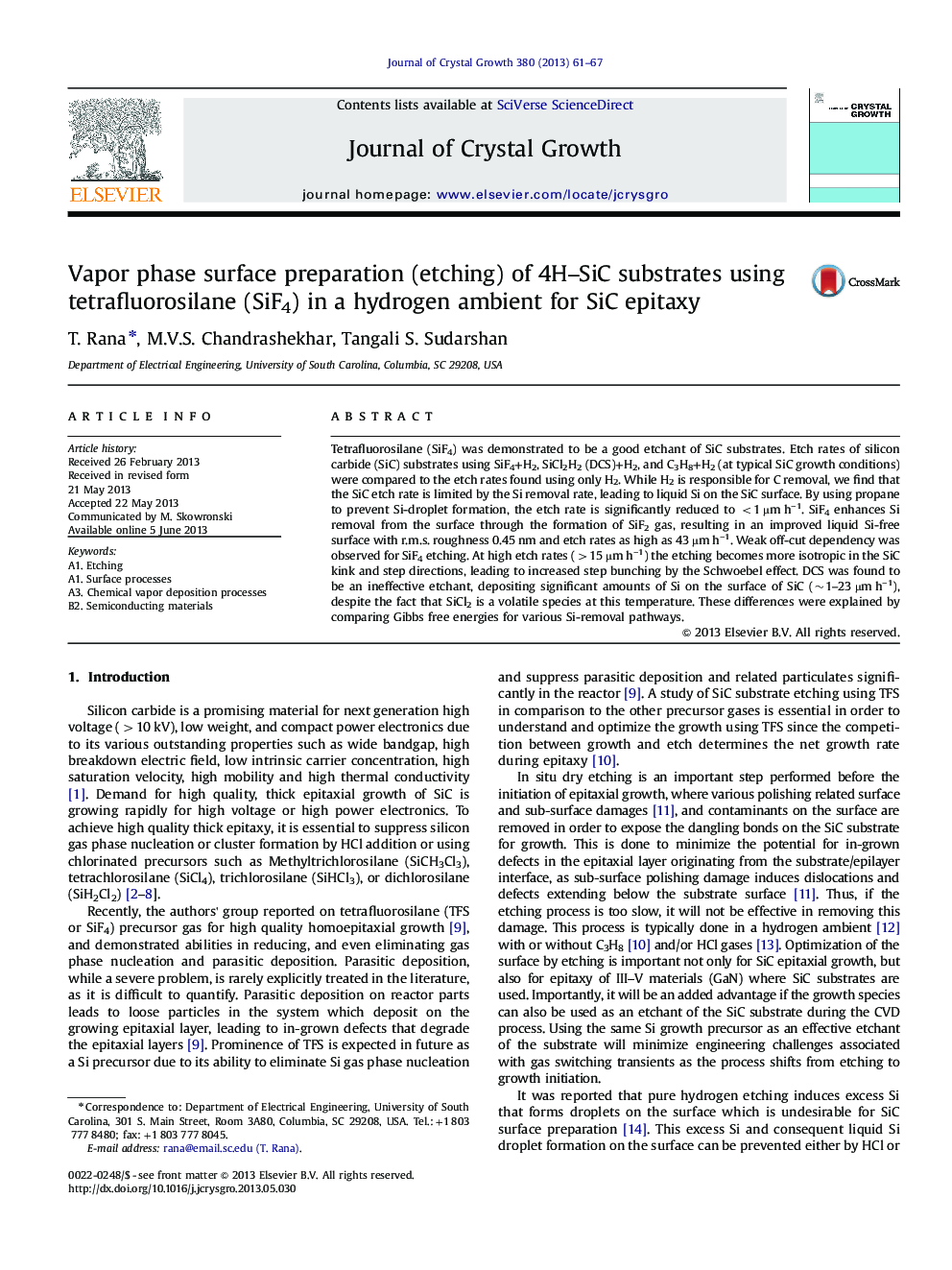| Article ID | Journal | Published Year | Pages | File Type |
|---|---|---|---|---|
| 8152192 | Journal of Crystal Growth | 2013 | 7 Pages |
Abstract
Tetrafluorosilane (SiF4) was demonstrated to be a good etchant of SiC substrates. Etch rates of silicon carbide (SiC) substrates using SiF4+H2, SiCl2H2 (DCS)+H2, and C3H8+H2 (at typical SiC growth conditions) were compared to the etch rates found using only H2. While H2 is responsible for C removal, we find that the SiC etch rate is limited by the Si removal rate, leading to liquid Si on the SiC surface. By using propane to prevent Si-droplet formation, the etch rate is significantly reduced to <1 µm hâ1. SiF4 enhances Si removal from the surface through the formation of SiF2 gas, resulting in an improved liquid Si-free surface with r.m.s. roughness 0.45 nm and etch rates as high as 43 µm hâ1. Weak off-cut dependency was observed for SiF4 etching. At high etch rates (>15 µm hâ1) the etching becomes more isotropic in the SiC kink and step directions, leading to increased step bunching by the Schwoebel effect. DCS was found to be an ineffective etchant, depositing significant amounts of Si on the surface of SiC (~1-23 µm hâ1), despite the fact that SiCl2 is a volatile species at this temperature. These differences were explained by comparing Gibbs free energies for various Si-removal pathways.
Keywords
Related Topics
Physical Sciences and Engineering
Physics and Astronomy
Condensed Matter Physics
Authors
T. Rana, M.V.S. Chandrashekhar, Tangali S. Sudarshan,
